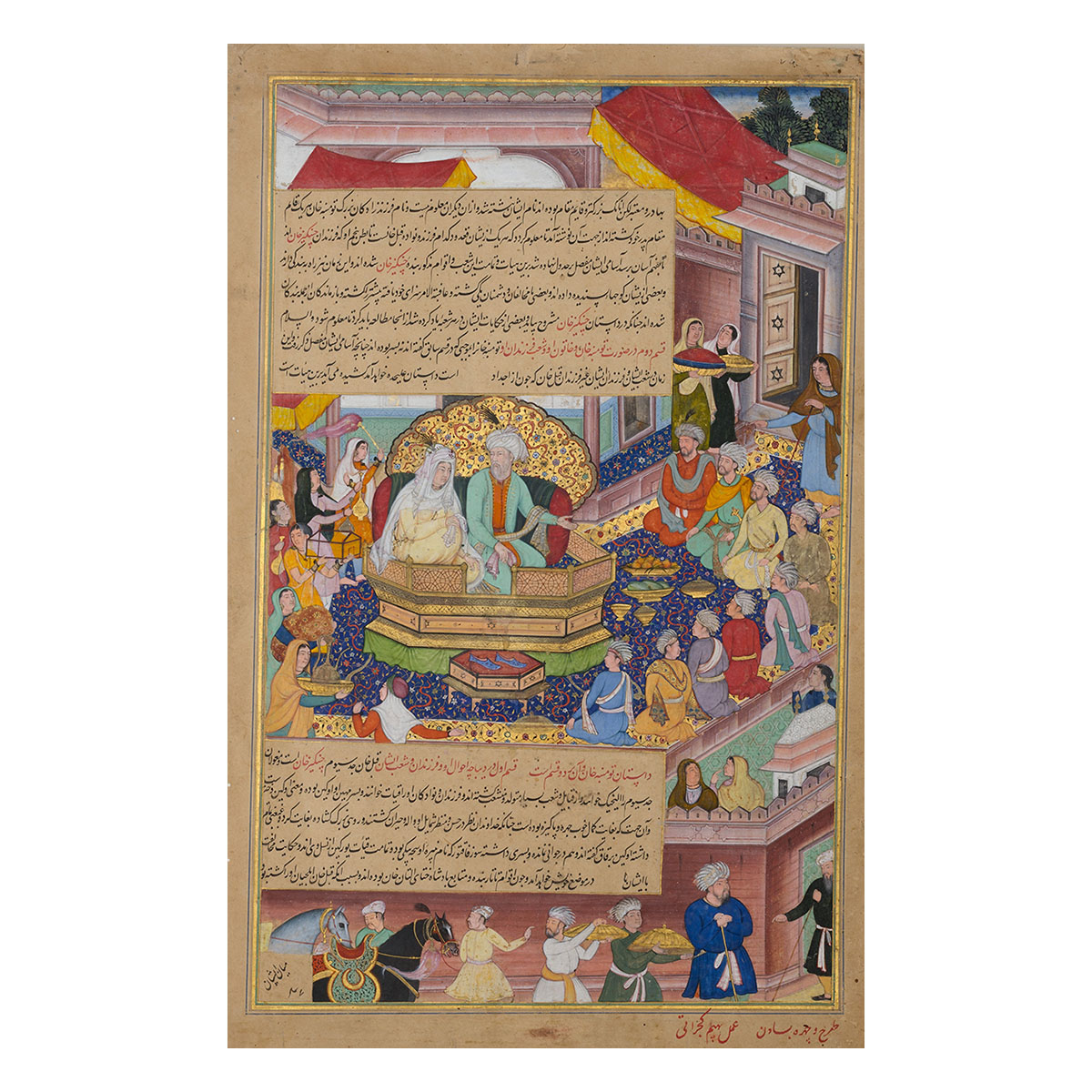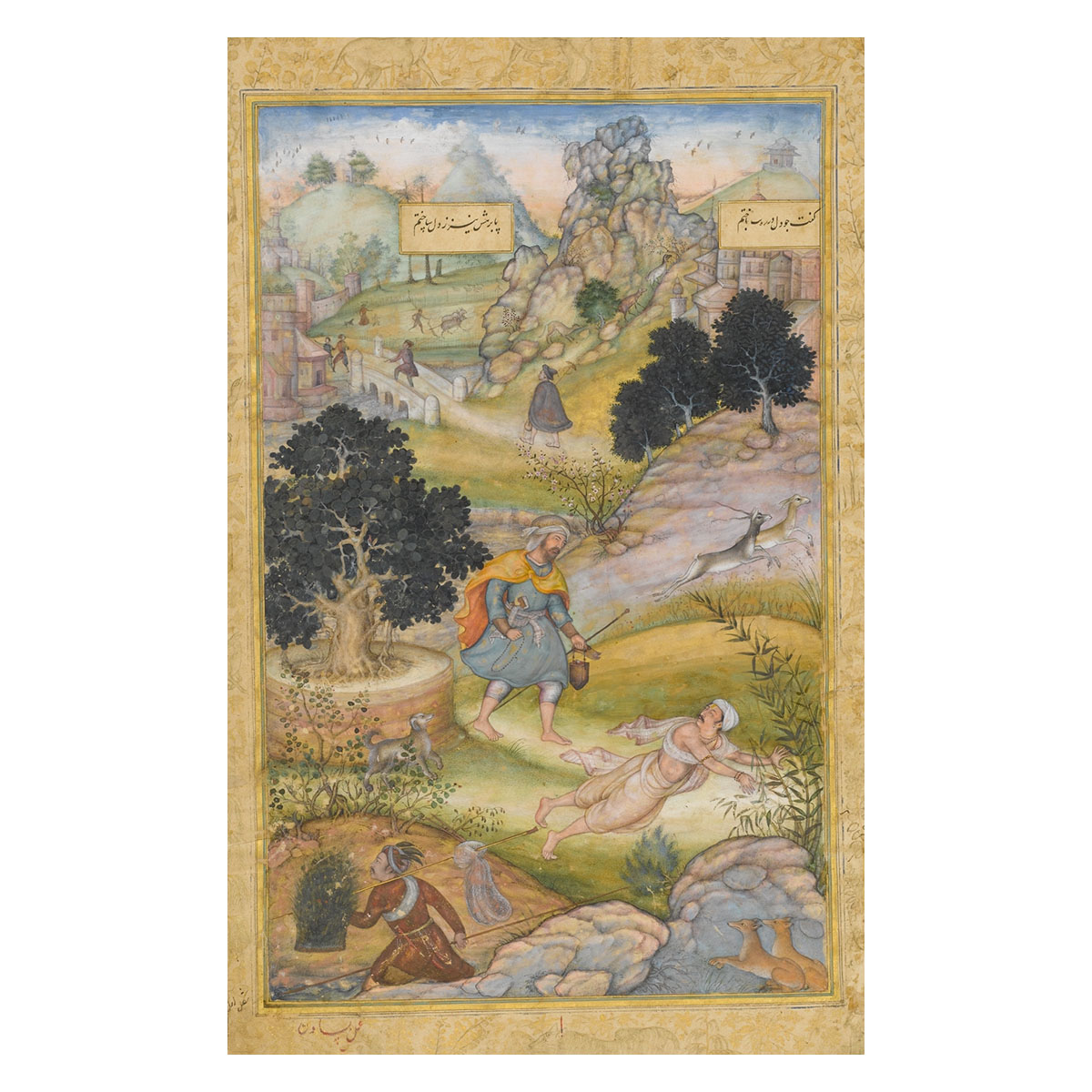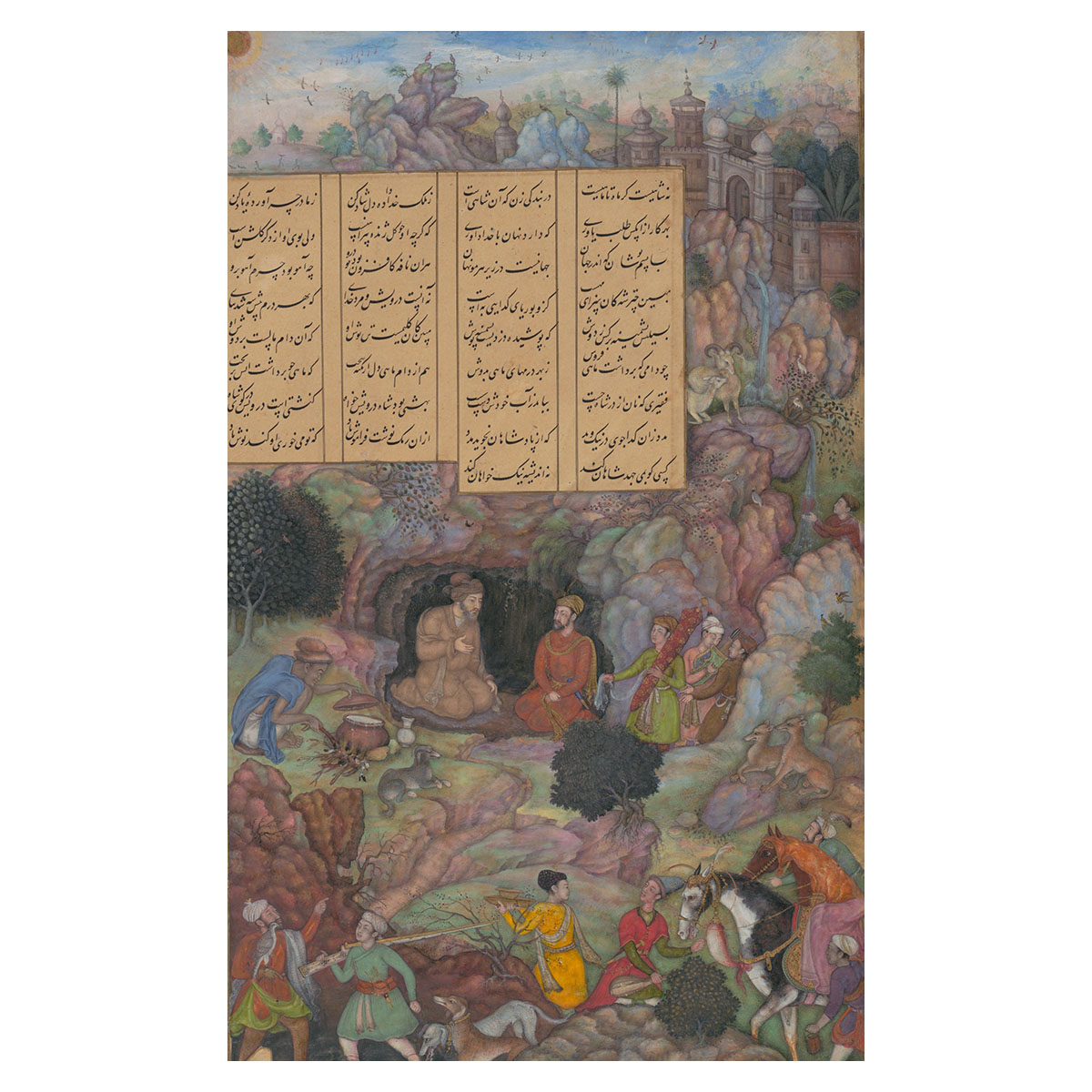ARTICLE
Basawan
A Mughal miniature painter in the court of Akbar, Basawan was well-known for his development of Mughal naturalism and his use of techniques of European painting within the Mughal art form. A student of the master Persian painter, Khwāja Abd al-Ṣamad, Baswan is best known for his contributions to the Razmnama (a Persian translation of the Mahabharata), the Timurnama (Book of Timur), Akbarnama (Book of Akbar) and Baharestan (a collection of prose by the Persian poet Jami). Basawan was active in the late sixteenth century, up to c. 1600.
According to scholars, Basawan appears to have studied European paintings that were brought to Akbar’s court by Jesuit missionaries. This is also evident through his use of linear perspective as well as contrasts of light and shade. His paintings from the latter half of the 1590s display a fusion of European pictorial devices into a newly emerging post-Safavid Mughal style. He often painted European-inspired figures within more traditional Mughal surroundings, as seen in works such as A Learned Man (c. 1575–80) which is executed in the nim qalam (half-pen) technique, characterised by the use of ink outlines and tonal washes accentuated with highlights in colour and gold, also a speciality of Basawan’s. His drawings also included depictions of Biblical subjects, such as The Virgin Mary Holding a Book (c.1585–90). Basawan’s focus on pictorialism led to a particular emphasis on fabric, nature, and architecture in his work. For instance, in a folio from the Razmnama titled “Bhima arrives in Dwarka” he depicts details of tiles, inlay work and other architectural elements in order to create a realistic sense of space. The Origin of Music, a page from a Tutinama manuscript, is noteworthy for Basawan’s naturalistic rendering of rocks and trees, at the time relatively new to Mughal painting. Basawan’s realistic and pictorial aesthetic approach has often been compared to the more fantastical style of his contemporary, Daswanth; after his death, Basawan’s approach became the predominant style within Mughal art.
He was succeeded by his son, Manohar Das, who also went on to become a court painter.
Bibliography
Our website is currently undergoing maintenance and re-design, due to which we have had to take down some of our bibliographies. While these will be re-published shortly, you can request references for specific articles by writing to hellomapacademy@map-india.org.









